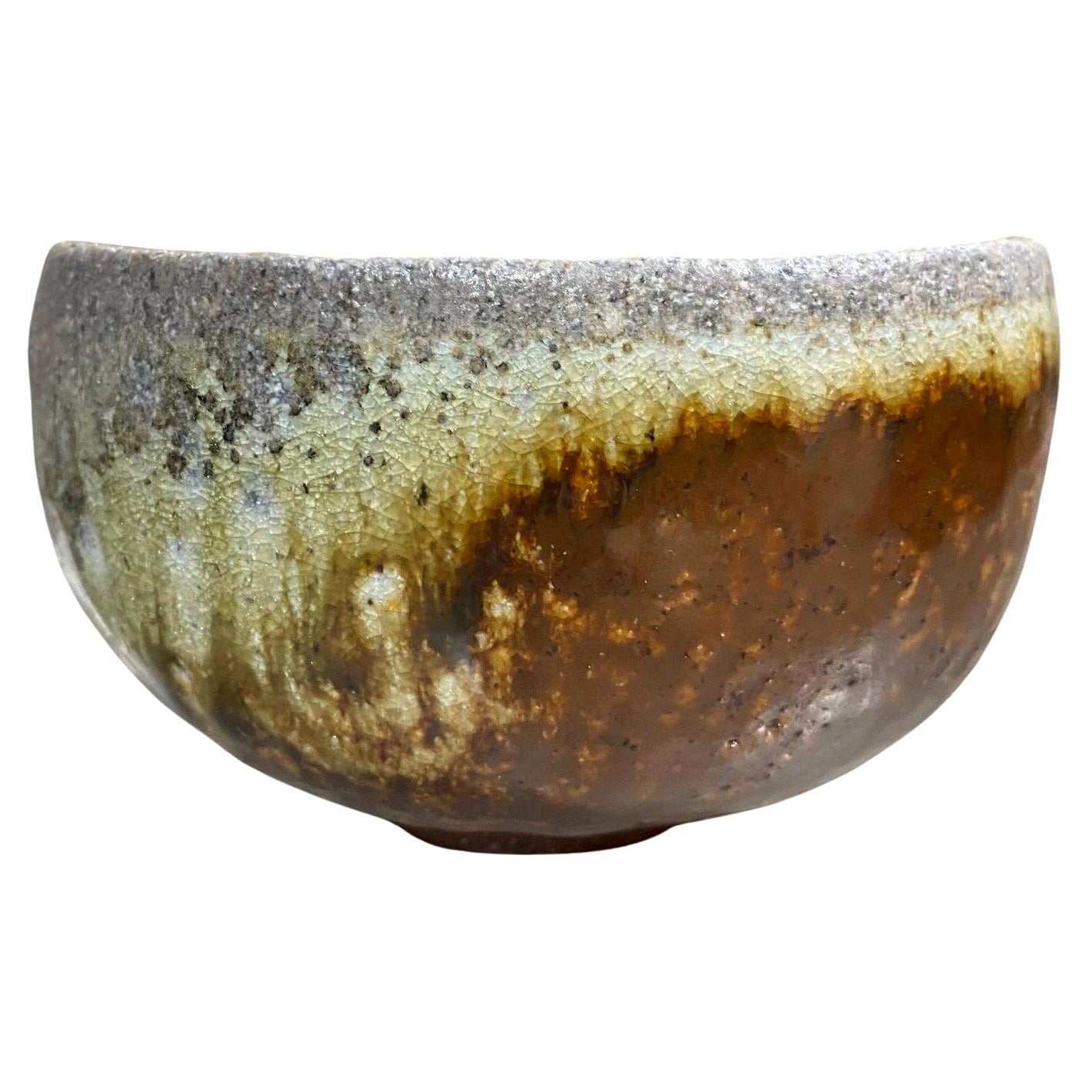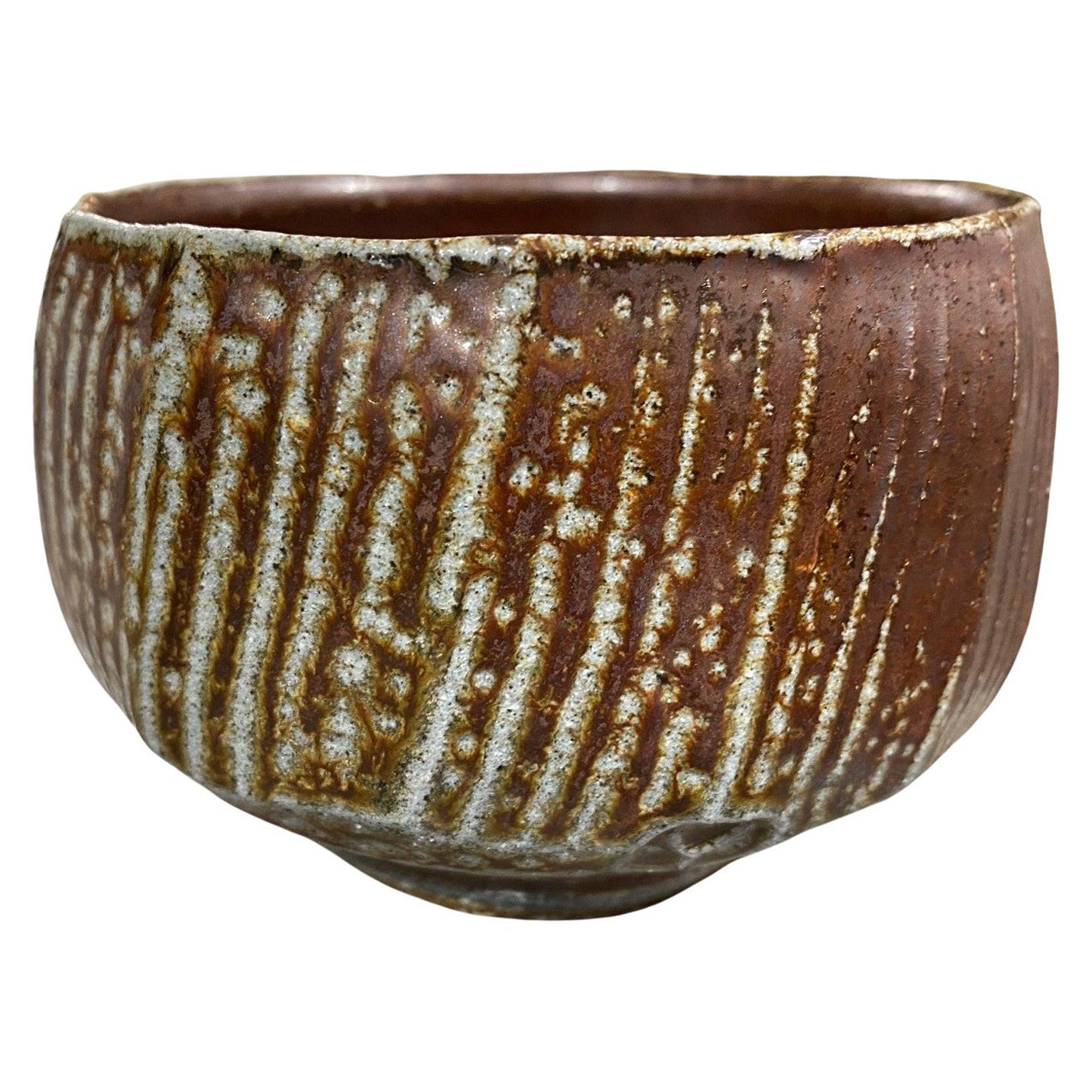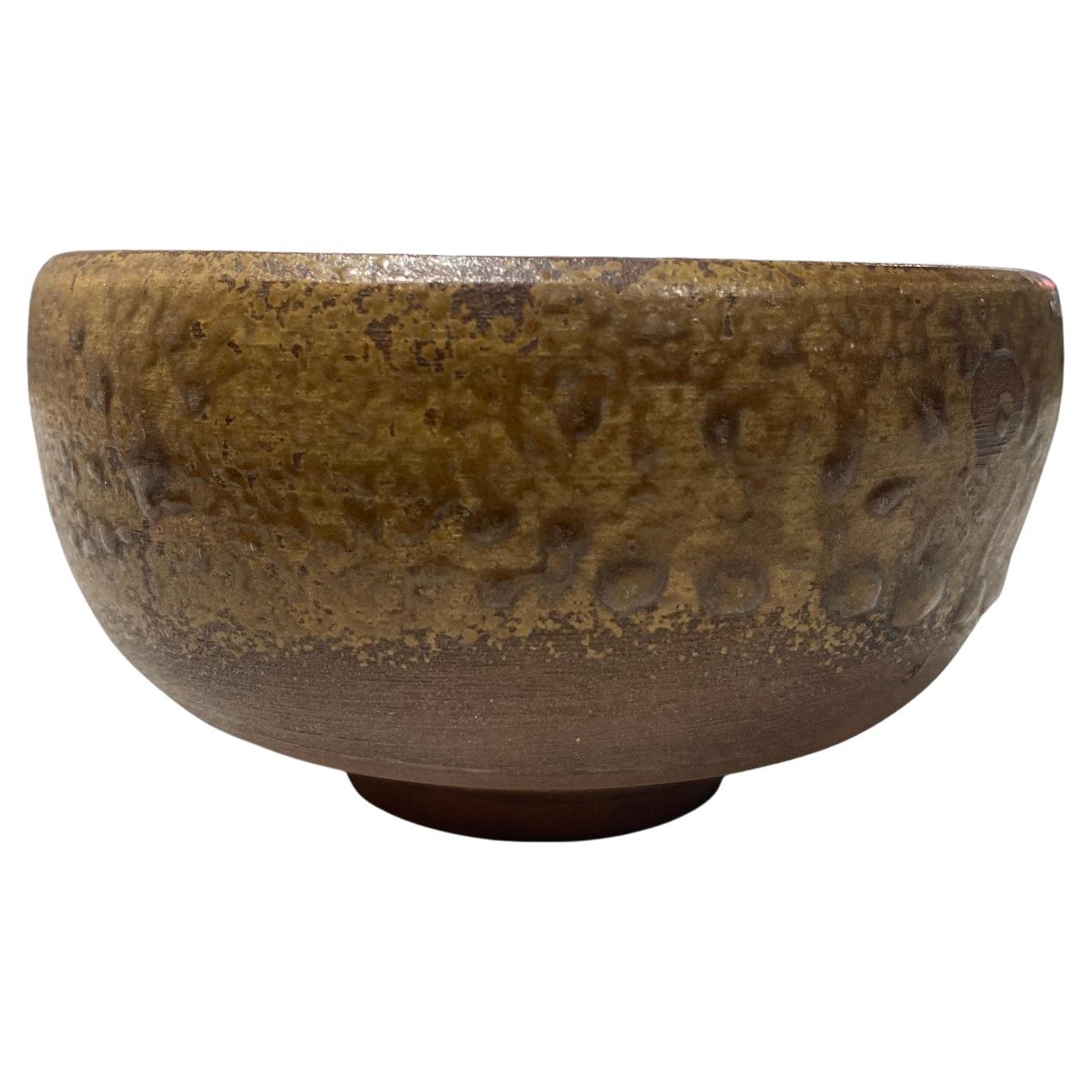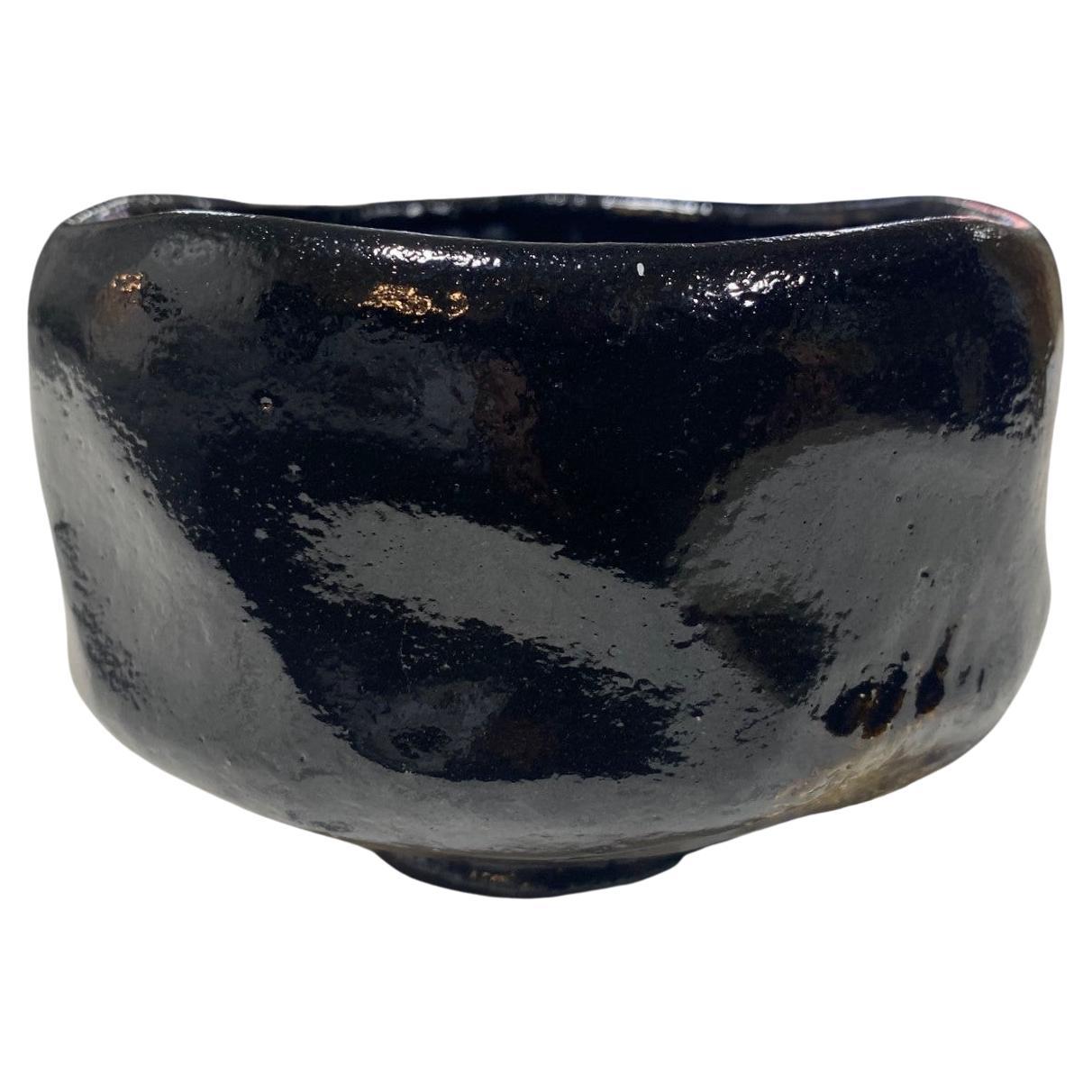Items Similar to Ogata Kenzan Signed Japanese Asian Edo Period Pottery Tea Bowl Chawan
Want more images or videos?
Request additional images or videos from the seller
1 of 21
Ogata Kenzan Signed Japanese Asian Edo Period Pottery Tea Bowl Chawan
About the Item
A spectacularly designed and beautifully made Chawan tea bowl dating back to the Edo period. This work is attributed to Ogata Kenzan who is widely considered to be Japan's most famous ceramic artist.
Ogata Kenzan (also called Kenzan), whose original name was Ogata Shinsei, was born in 1663 in Kyoto, Japan. Kenzan studied with the potter Nonomura Ninsei and eventually established his own kiln. Kenzan is known for his distinctive style and motifs which often featured freely brushed grasses, blossoms, flowers, and birds. His works were famed for their perfect relation between design and shape. He often collaborated on the decoration of pottery with his older brother, the Japanese artist Ogata Korin, after whom the style known as Rinpa was named.
After his passing in 1743, subsequent Japanese potters inherited the name Ogata Kenzan (none were blood-related) as an homage to the original pottery master.
The bowl, which features the very coveted Maru-Mon circular pattern, is signed by Ogata on the base. The "Kenzan" can be made out despite the glaze overflow.
To be perfectly frank, the Japanese dealer we acquired the bowl from said he was unsure if this piece was made by Ogata Kenzan the First or Ogata Kenzan the Second. The bowl is age-appropriate as is the signature to be the original Kenzan. We are simply listing it as attributed to.
The tea bowl comes with the original wood box which has Japanese writing on the bottom - perhaps a poem but our sources have been unable to translate it. The Japanese characters/ writing appears quite old. Our translators both at home and abroad in Japan have had difficulty deciphering it.
This work would be a great addition to any Asian or Japanese pottery/ ceramic collection - sure to stand out.
Bowl dimensions: 2.6" high, 4.6" wide, 4.5" deep
Box: 4.25" high, 5.25" wide, 5.25" deep.
- Dimensions:Height: 4.5 in (11.43 cm)Width: 4.6 in (11.69 cm)Depth: 2.6 in (6.61 cm)
- Style:Edo (Of the Period)
- Materials and Techniques:
- Place of Origin:
- Period:
- Date of Manufacture:18th Century
- Condition:The bowl is in very good vintage condition with one very small, thin hairline crack from the non-decorative side rim (quite natural with pottery pieces of this age. Does not leak. please see photos). Truly a special and unique work overall.
- Seller Location:Studio City, CA
- Reference Number:1stDibs: LU2254326799652
About the Seller
4.9
Platinum Seller
These expertly vetted sellers are 1stDibs' most experienced sellers and are rated highest by our customers.
1stDibs seller since 2016
770 sales on 1stDibs
Typical response time: <1 hour
- ShippingRetrieving quote...Ships From: Studio City, CA
- Return PolicyA return for this item may be initiated within 7 days of delivery.
More From This SellerView All
- Japanese Asian Signed Studio Pottery Wabi-Sabi Ceramic Glazed Chawan Tea BowlLocated in Studio City, CAA stunning Japanese stoneware Studio Pottery chawan tea bowl that features a beautiful dark rich glaze with wonderful shifts in pattern and texture. This particular piece encompa...Category
20th Century Japanese Showa Ceramics
MaterialsStoneware
- Japanese Asian Signed Studio Pottery Wabi-Sabi Ceramic Glazed Chawan Tea BowlLocated in Studio City, CAA gorgeous Japanese studio pottery chawan tea bowl that features a wonderful reddish-orange glaze with various shifts in colour and texture. This particular piece encompasses the...Category
20th Century Japanese Showa Ceramics
MaterialsEarthenware
- Japanese Asian Signed Studio Pottery Wabi-Sabi Ceramic Glazed Chawan Tea BowlLocated in Studio City, CAA stunning Japanese stoneware studio pottery chawan tea bowl that features a beautiful, heavy and sumptuously multi-glaze with wonderful shifts in color and texture. This bowl is wit...Category
20th Century Japanese Showa Ceramics
MaterialsStoneware
- Shiko Shikou Munakata Rare Signed Japanese Pottery Chawan Tea Bowl Signed BoxBy Shikou MunakataLocated in Studio City, CAAn exceptionally rare, wonderfully designed Chawan tea bowl by famed Japanese master woodblock printmaker/ artist Shiko Munakata (1903-1975) who is widely considered to be the most important Japanese visual artist of the 20th century and the Pablo Picasso of Japan. This hand-painted work clearly illustrates Munakata's whimsical side as it is of a Koma - a child's spinning top toy. Very few examples of Munakata's work in ceramics exist still today. The work is signed by Munakata on the base as well as the original wood protective storage box (his seal can also be seen faintly in the lower-left corner). The bowl has a small kintsugi or "golden joinery" repair - the Japanese art of repairing broken pottery by mending the areas of breakage with lacquer dusted or mixed with powdered gold - on the inside. As a philosophy, it treats breakage and repair as part of the history of an object, rather than something to disguise. Munakata who is often compared to Picasso was primarily associated with and a principal figure in both the Sosaku-Hanga (which stressed the artist as the sole creator ) and the Mingei (folk art) movements. His many accolades and awards include the "Prize of Excellence" at the Second International Print Exhibition in Lugano, Switzerland in 1952, and first prize at the São Paulo Bienal Exhibition in Brazil in 1955, followed by the Grand Prix Award at the Venice Biennale in 1956, and the Order of Cultural Merit, the highest honor in the arts by the Japanese government in 1970. In 1960 after returning from a year abroad exhibiting his work in the United States, the Horinji Temple in Kyoto bestowed upon him the honorary rank of “Hokkyo”. In 1962, he received the rank of “Hogan” from Nisseki Temple in Toyama prefecture. He also received a Medal of Honor in 1963 and the Asahi Shimbun culture prize in 1965. Munakata's work can be found in numerous international collections and museums including: The Britsih Museum, UK The Chicago Art Institute Museum of Modern Art (MOMA), NY The Metropolitan Museum of Art (The Met), NY The Philadelphia Museum of Art The Smithsonian American Art Museum (SAAM), Washington DC Kemper Art Museum, St. Louis And his own museum The Munakata Shiko...Category
Mid-20th Century Japanese Showa Ceramics
MaterialsCeramic
- Kaneshige Toyo National Treasure Signed Japanese Bizen Pottery Chawan Tea BowlLocated in Studio City, CAA beautiful, perfectly shaped antique Bizen ware Chawan tea bowl by renowned Japanese master potter/artist Kaneshige Toyo (1896-1967) featuring a unique natural, organic forming ash glaze. Kaneshige is universally considered to be the founder of modern Bizen pottery. In 1956, Kaneshige was certified as a Living National Treasure (Important Intangible Cultural Heritage) for his work in Bizen Ware pottery/ceramics. Bizen Ware is a type of Japanese pottery traditionally from the Bizen province, presently a part of the Okayama prefecture. It is considered one of the Six Ancient Japanese Kilns (along with Echizen ware, Seto ware, Shigaraki ware, Tamba ware, and Tokoname ware). The piece is signed/ sealed on the base with one of Kaneshige's traditional incised marks. A rather engaging and scarce work. Would be a fantastic addition to any Japanese/Asian pottery or Bizen Ware collection or eye-catching stand-alone work in about any setting. Kaneshige's work can be found in numerous prominent collections and museums including: Aichi Prefectural Ceramic Museum, Seto, Japan Brooklyn Museum, NY Hagi Uragami Museum, Yamaguchi, Japan Honolulu Art Museum, HI Ibaraki Ceramic Art Museum, Kasama, Japan Indiana Art...Category
Mid-20th Century Japanese Showa Ceramics
MaterialsStoneware
- Sasaki Shoraku III Signed Japanese Raku Pottery Chawan Tea Bowl with Signed BoxLocated in Studio City, CAA wonderful Raku-fired pottery Chawan tea bowl by a renowned Japanese pottery master and one of Kyoto’s most prominent and best-known Raku-yaki potters Sasaki Shoraku III (1944- ). The work features a beautifully contoured body and dark rich glaze. The Shoraku line began when the grandfather of the current potter established a kiln near the famous Kiyomizu Temple, nestled at the foot of the eastern mountains...Category
20th Century Japanese Showa Ceramics
MaterialsPottery
You May Also Like
- Korean Gohon Chawan Tea Bowl for Japanese Market Joseon DynastyLocated in Atlanta, GAA ceramic chawan (tea bowl) circa 17-18th century fired in the Busan kiln in Korean specifically for the Japanese market. The kilns were run by the So c...Category
Antique 17th Century Japanese Edo Ceramics
MaterialsCeramic
- Vintage Japanese Oribe Ware Tea Bowl, Chawan, by Matsumoto TetsuzanLocated in Austin, TXA charming vintage Japanese oribe glazed chawan by Matsumoto Tetsuzan (b. 1955), Seto, Japan. The tea bowl, called a chawan, wonderfully potted with...Category
Early 2000s Japanese Edo Ceramics
MaterialsStoneware
- Japanese Ceramic Bowl Makuzu Kozan Utusushi KenzanBy Makuzu KozanLocated in Atlanta, GAA rare ceramic bowl with over glaze painted decoration by Japanese imperial potter Makuzu Kozan ((1842–1916). Unlike the better known works Kozan made for the expositions in the west and export to the foreign market, this piece exemplifies his work for the domestic market and the tea ceremony. The bowl was made in the so called "Utusushi" Ogata Kenzan (1663-1743), an celebrated Edo painter and ceramicist. Utusushi is loosely translated as "in the spirit of". It is not at all a simple imitation of a master, but a Japanese concept of embracing the spiritual essence of a master while the creator is free to mix in his or her own unique artistic interpretation and flavor. The bowl was made to hold fruits during the tea ceremony. It has a very distinguished form with a circular lower body morphing into a square upper portion that further opening with flared rim. The surface has a grey glaze onto which Asagao flowers (Japanese morning glory) on the vines were painted in a free and poetic style. White was used for the petals, green for the leaves with touches of gold highlight. Asagao, the symbol of the summer was rendered in the spirit of Ogata Kenzan, and interestingly the shape of the blossom echoes the unique form the bowl. It was likely reserved for the tea ceremony during the summer months. Under the base, Kozan was signed in black on an white porcelain plaque inlay. For two similar examples of Kozan's work Utusushi Kenzan, see Page 168-169 of the book: Sekai ni Aisa Reta ya Kimono Miyagawa Kozan Makuzu...Category
Antique Early 1900s Japanese Japonisme Ceramics
MaterialsCeramic
- Antique Korean Ceramic Gohon Chawan Tea Bowl Joseon DynastyLocated in Atlanta, GAA ceramic chawan (tea bowl) circa 17-18th century fired in the Busan kiln in Southern Korean specifically for the Japanese market. The kilns were contro...Category
Antique 17th Century Japanese Edo Ceramics
MaterialsCeramic
- Korean Ceramic Kakinoheta Chawan Tea BowlLocated in Atlanta, GAA "Kakinoheta" type ceramic chawan (tea bowl) made in Korean during Joseon dynasty circa 16th-17th century. The bowl has a slight irregular flat shape w...Category
Antique 17th Century Korean Other Ceramics
MaterialsCeramic
- Korean Ceramic Ido Tea Bowl Chawan Joseon DynastyLocated in Atlanta, GAA ceramic stoneware chawan tea bowl made in Korea circa 16-17th century. The chawan is identified as Ko-ido (small ido) due to its size and form. Ido bowls were made since 15th centu...Category
Antique 17th Century Korean Other Ceramics
MaterialsCeramic
Recently Viewed
View AllMore Ways To Browse
Japanese Ceramics Edo Period Or Earlier
Asian Base
Asian Art Japan
Asian Cans
Original Asian Art
Century Furniture Asian Motif
Asian Art Signed
Japan Pottery
Japanese Wood Sign
Art Pottery Signed
Edo Japanese Furniture
Asian Wood Base
Asian Wood Hand Crafted
Edo Period Furniture
Edo Period Japan
Japanese Art Edo
Antique Asian Boxes
Antique Asian Box





